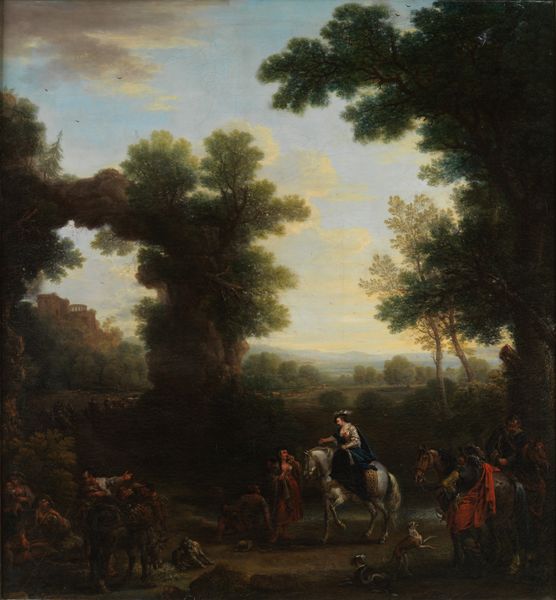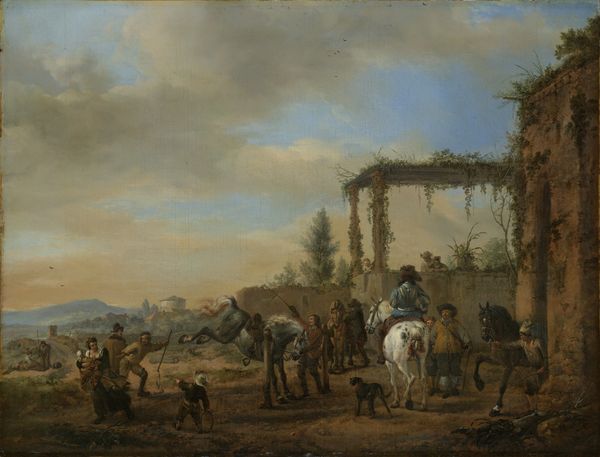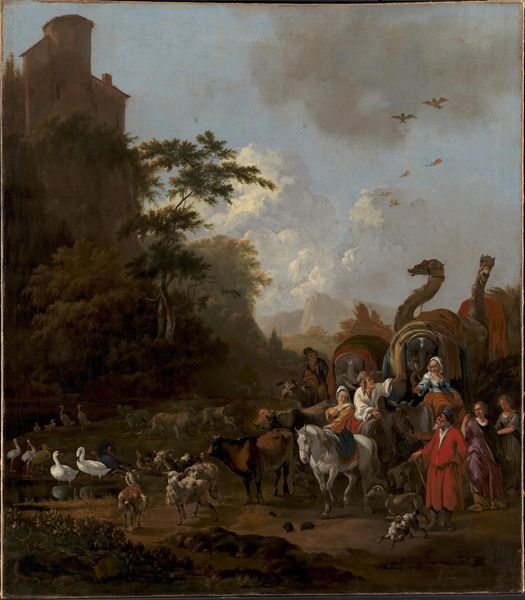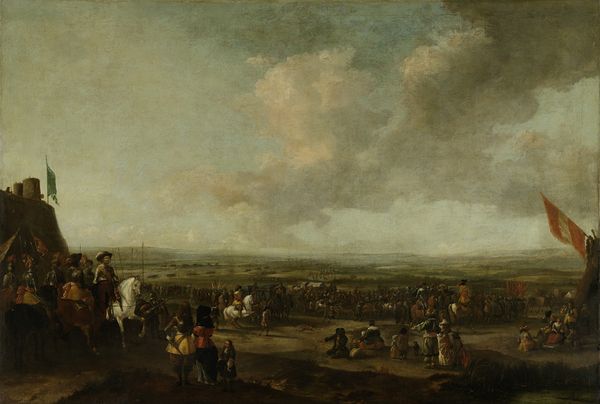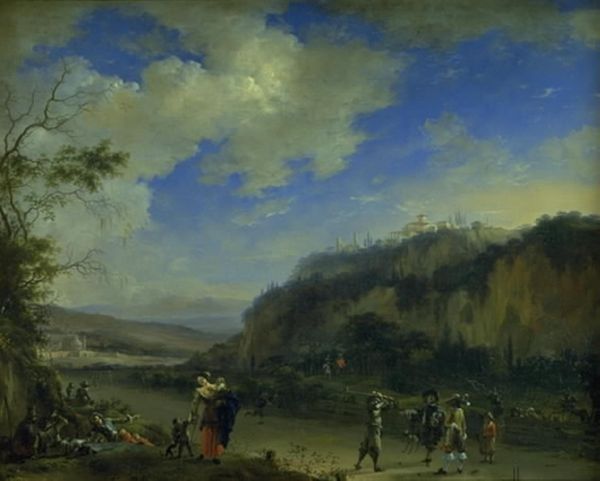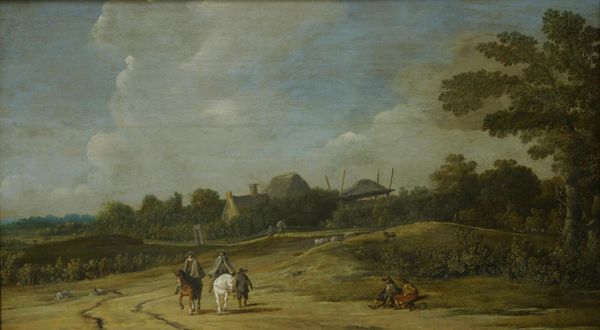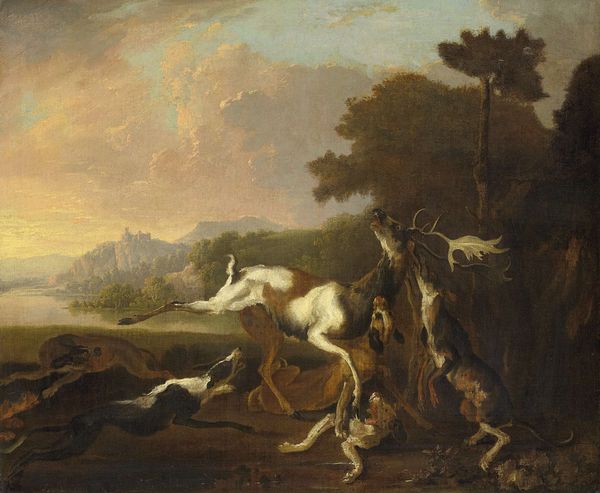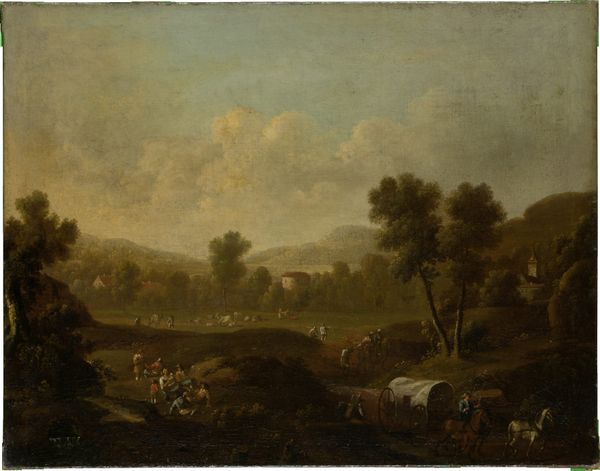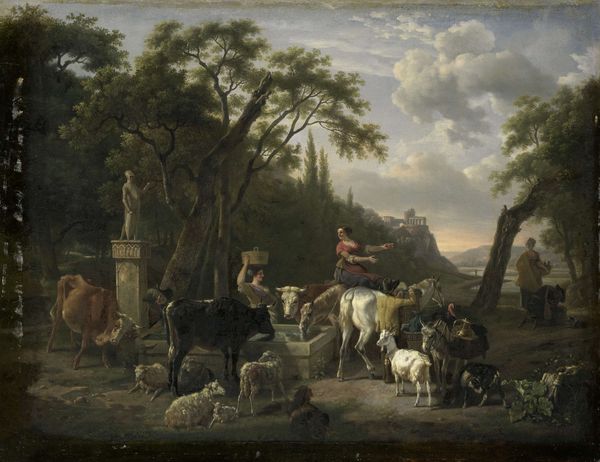
painting, oil-paint
#
narrative-art
#
baroque
#
dutch-golden-age
#
painting
#
oil-paint
#
landscape
#
figuration
#
oil painting
#
genre-painting
Dimensions: height 66 cm, width 80.5 cm
Copyright: Rijks Museum: Open Domain
Curator: Let’s turn our attention to Pieter Wouwerman’s “Hunting Party at a Fountain,” likely painted between 1660 and 1682. Editor: Oh, I get a sense of opulent leisure. A really relaxed theatricality pervades the whole scene. It's a little self-aware, maybe even…performative. Curator: Absolutely, this work functions as a record of aristocratic pleasure, wouldn't you say? It seems relevant to discuss how class distinctions influence both who is depicted, and their very means for commissioning and, later, for consuming art, isn't it? Editor: Exactly! What is this oil painting, when you get right down to it, but compressed pigments in a flaxseed suspension? The whole production of a fine scene hinges on resources and leisure time unavailable to common people. Curator: Tell me more. How might an artist handle those constraints? Editor: Wouwerman and his workshop produced hundreds of paintings like this, streamlining his process. He developed something akin to assembly line methods. Labor divisions like that show an increased emphasis on producing luxury for burgeoning markets. I would be very curious about what materials he preferred, how he processed them, and what his economic relationship was to those commodities. Curator: A fascinating and relevant inquiry. I also detect an awareness of mortality. The archer atop the fountain perhaps represents our fleeting pursuit of pleasure and earthly things, reminding us of their ultimate futility, or maybe his quiver's empty. A botched hunt and their status might be jeopardized, perhaps. Editor: Interesting interpretation. Yes, such imagery often masks anxieties tied to status and wealth, and the economic shifts that shaped it. Still, I am sure Wouwerman took pride in making it, even under pressures from wealthy buyers, pigment suppliers, and perhaps even demanding colleagues. Curator: Well, whether documenting or critiquing privilege, Wouwerman presents a snapshot of a society in flux. This has given me something new to reflect on, and I hope our listeners feel similarly provoked. Editor: I think so, and I agree: reflecting on the making as well as the viewing offers important ways into artworks that at first may seem quite straightforward.
Comments
No comments
Be the first to comment and join the conversation on the ultimate creative platform.


